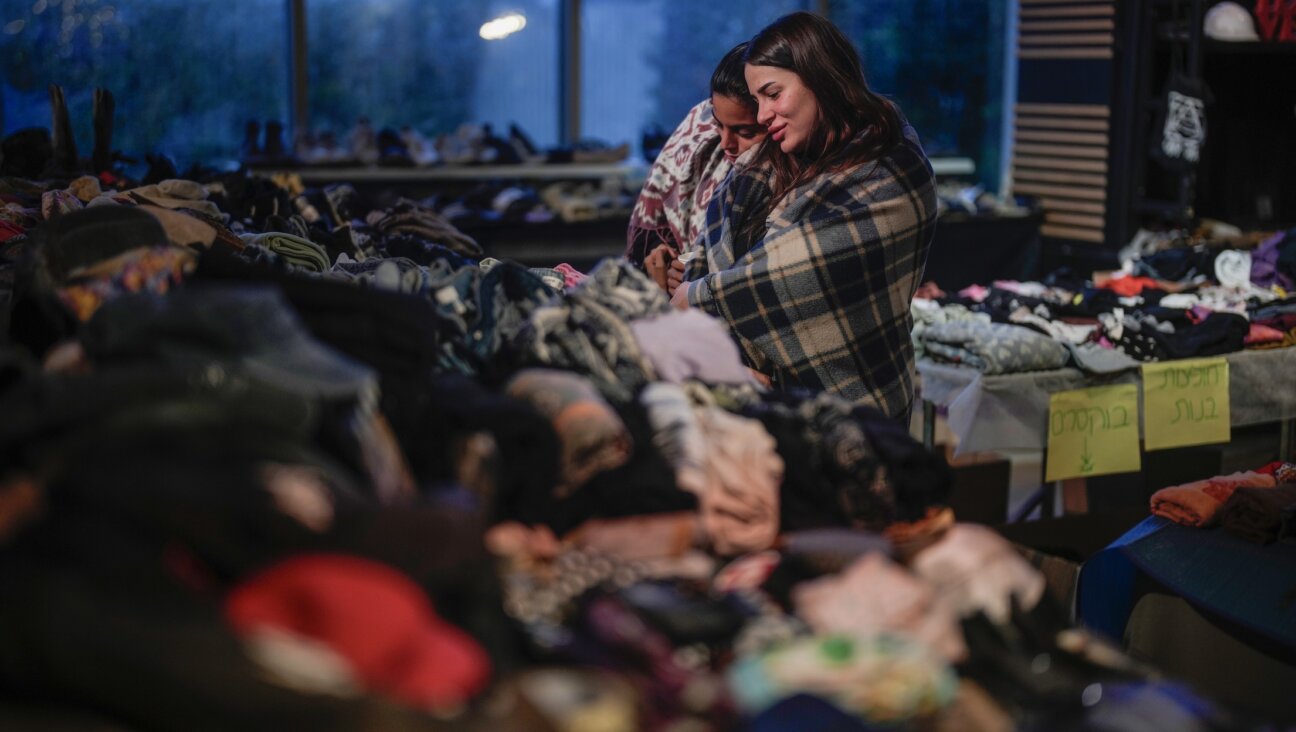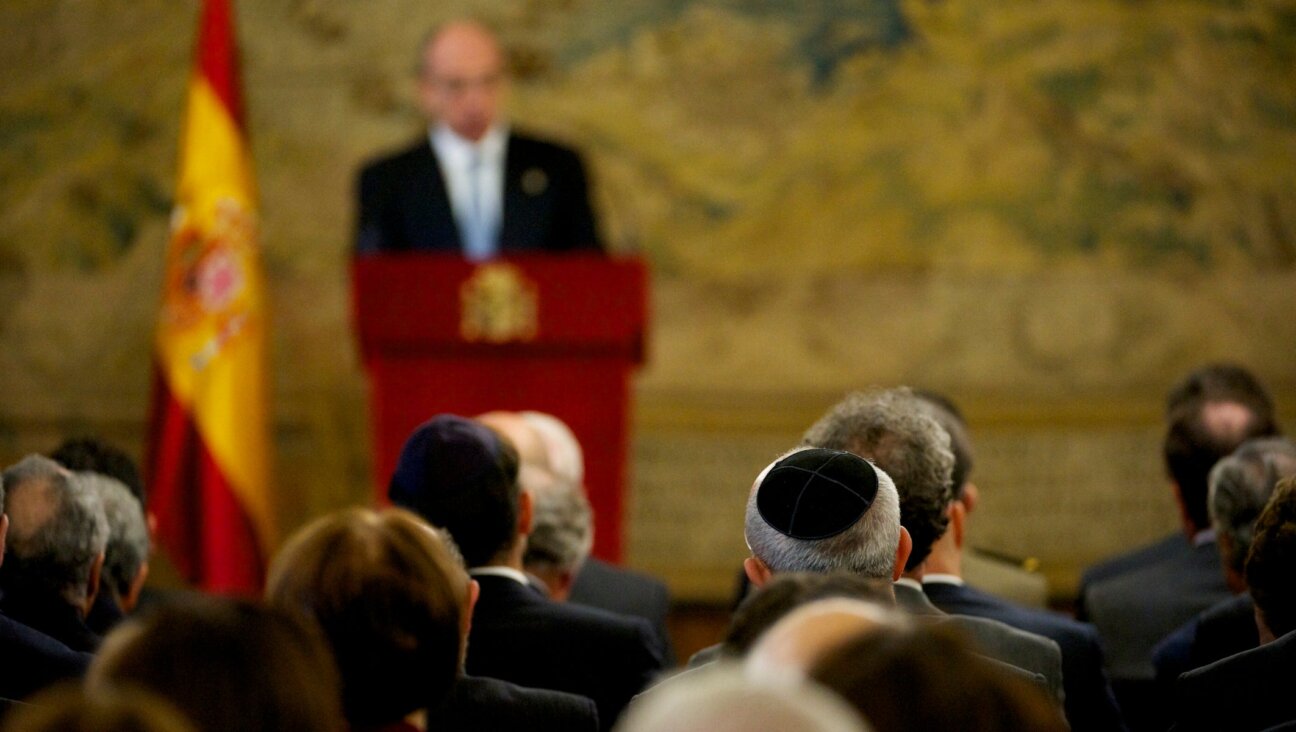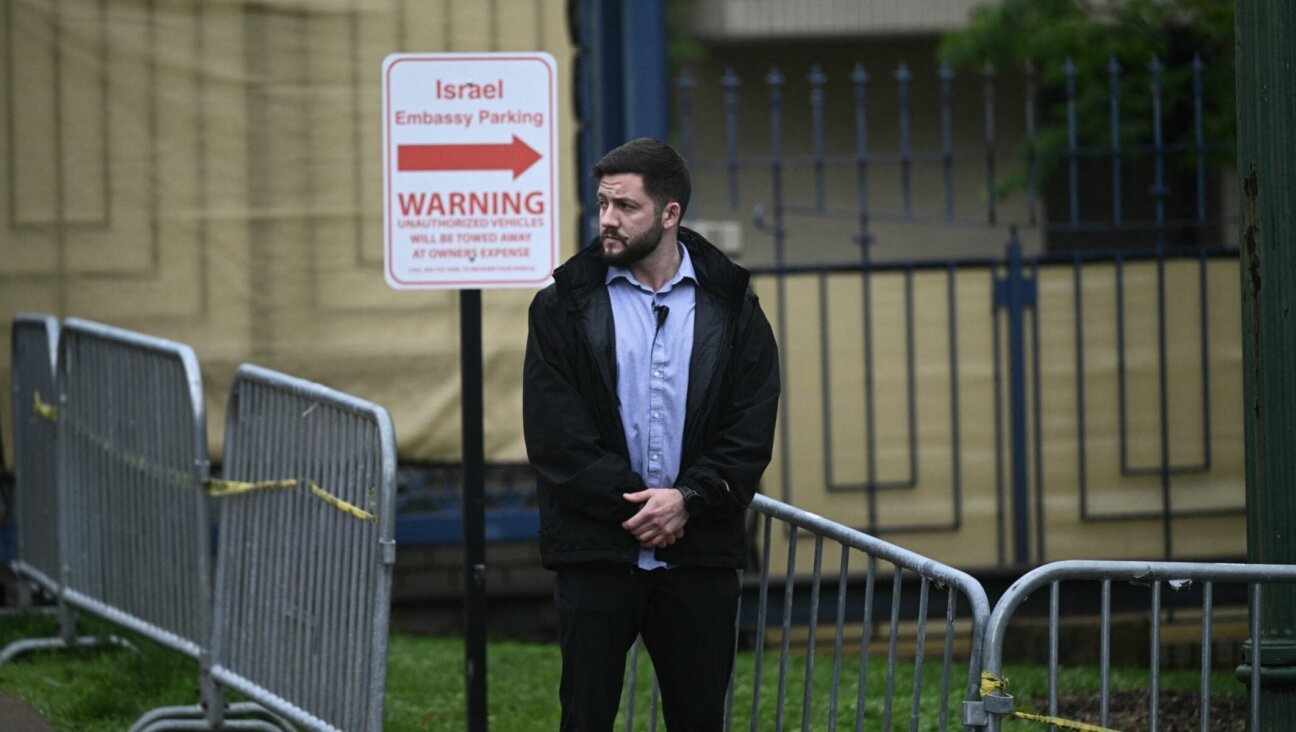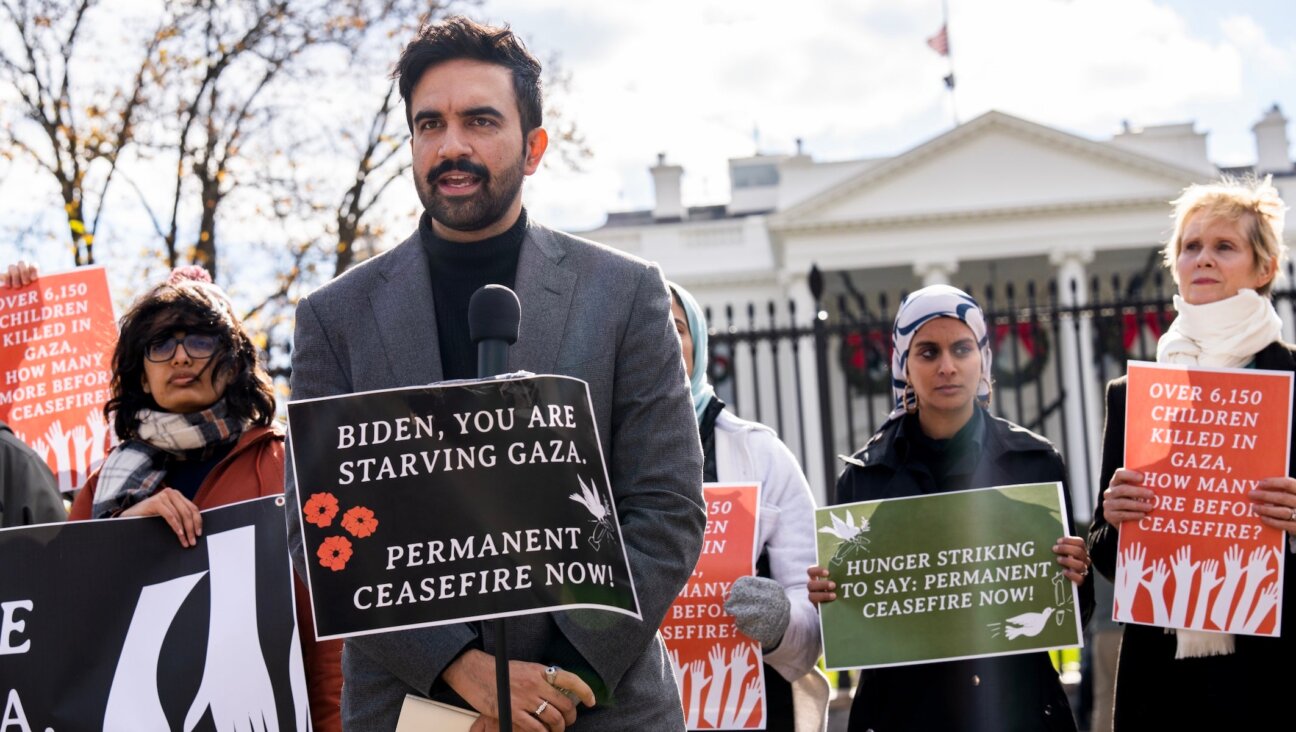Why did a former Oath Keeper leave over Holocaust denialism? Because of his Jewish family.
Jason Van Tatenhove toured the U.S. Holocaust Memorial Museum the day before his testimony to the Jan. 6 committee

Jason Van Tatenhove, who served as national spokesman for the Oath Keepers and as a close aide to Oath Keepers founder Stewart Rhodes, appears for testimony during the seventh hearing by the House Select Committee to Investigate the January 6th Attack on July 12, 2022, in Washington, D.C. Photo by Kevin Dietsch/Getty Images
Jason Van Tatenhove testified before the Jan. 6 committee that he left the Oath Keepers, the far-right militia group that took part in the attack on the Capitol, after hearing some of its members express Holocaust denial over coffee in 2016.
“That was for me something I just could not abide.”
Why, I asked him over the phone the day after his July 13 testimony, was that the final straw?
“Because I thought of my Jewish family,” he said.
I understand life is messy and complex and no one is exactly what they seem. But I wasn’t expecting a tattooed former militia member to be talking to me from a kitchen table in suburban New Jersey, alongside his Jewish aunt and cousin.
Van Tatenhove’s uncle, Toki Tolkach, married Robin Mintz, a Jewish woman from northern New Jersey. Van Tatenhove himself, who is 48, grew up in Green Pond, New Jersey, where one of his best friends, from age 2, was his cousin Sarah Coan Cwiak, who is a year younger.
“You know, they’re married into the family,” he said, “but they’re still family.”
Van Tatenhove, a former Oath Keepers spokesman, said he was living at reduced rent with his wife and two of his four daughters on a Montana property that belonged to one of the group’s wealthy supporters.
“It’s kind of like where the who’s who of the extremist movements live,” he said.
That day in late 2016, he said, four or five Oath Keepers were meeting in the small deli section in the back of Stein’s Market in the town of Eureka, near the Canadian border.
“I just kind of walked over to where they were and they were literally speaking out loud about how the Holocaust just had not happened, or if it had happened had been greatly exaggerated,” he said. “Some of the guys were just saying that the messaging had gotten backwards and that there were concentration camps for Americans.”
He went home and told his wife he could no longer work for the Oath Keepers.
“We had a family meeting,” he told me. “I didn’t know how we’re gonna survive. But we just decided as a family, that’s it, we just can’t do it. I put in my resignation.”
Van Tatenhove said he was drawn to Oath Keepers after the federal government’s 2014 standoff with Cliven Bundy, a Nevada rancher, and a similar 2015 confrontation at Sugar Pine Mine in Oregon. It was then that Stewart Rhodes, who founded Oath Keepers in 2009, offered Van Tatenhove a full-time job.
“They kind of started off in the early days as educational outreach, talking about constitutional issues,” Van Tatenhove said. “I definitely held my fair share of mistrust of government.”
He said there were no obvious signs he had joined a hate group. Rhodes himself has Mexican heritage, and he knew Van Tatenhove identified as queer.
“Stewart was fine with the fact I was bi or pansexual, and had no problem with it,” Van Tatenhove said.
But his Jewish relatives were never fine with the Oath Keepers.
“The first reaction was, ‘What the f—?!” his cousin, Coan Cwiak, told me.
“It didn’t line up with who we knew him to be,” added his aunt. “We didn’t know if you’re going off the rails.”
Van Tatenhove, who moved with his mother from New Jersey to Colorado when he was 12, grew up going to Hanukkah celebrations and Passover Seders with the New Jersey relatives, who sometimes celebrated Easter and Christmas with his family.
“We kind of blended the holidays,” Van Tatenhove said.
When he joined the Oath Keepers, Coan Cwiak, “we didn’t confront him,” but “we just kind of kept an eye on things.”
Van Tatenhove sees the Oath Keepers’ growing racism as opportunistic. “I don’t think Stewart is racist in his core,” he said of Rhodes, who has been charged with seditious conspiracy in connection with the Jan. 6 attack. “I think he just will cater to whatever will bring him the most money and the most influence and power, which is almost more dangerous. You know, he just has no moral anchor there.”
Over the years, conspiracy theories and racist ideology began to ricochet around the group’s social media: “the great replacement theory,” for example, which posits that people of color are vying to replace white people in spheres of power and influence in a scheme orchestrated by Jews, and charges that George Soros and Warren Buffett control the government.
“It was a lot of, ‘They’re going to come and round up all the white conservative Christians and put them into reeducation camps in deserted Walmarts,’” he said.
Looking back, Van Tatenhove said it was easy to see what lured him and others into the group. For one, it was an adventure.
“I flew to work in a Huey and got to travel all over the country,” he said, “and be in the middle of these things that got all this national attention.”
He was also in an echo chamber, surrounded by like-minded white, Christian conservatives, and immersed in alt-right social media, which he called a “blast furnace” of hate and conspiracy.
“I mean, that’s the 500-pound gorilla in the room,” he said. “The algorithms just really weaponized this type of rhetoric. And if you’re in that echo chamber, it’s hard to hear any voice outside of that.”
Now that he’s outside the blast furnace, Van Tatenhove has found connections with people he previously vilified: journalists reporting on hate groups, professors studying extremism, even a federal agent once sent to northern Montana to keep tabs on him.
“He became one of my best friends,” Van Tatenhove said. “To this day, we still talk, and our kids are still friends.”
Then there is Raphael Prober, a Washington lawyer and former board member of the U.S. Holocaust Memorial Museum, who helped Van Tatenhove pro bono prepare his testimony for the committee.
It was Prober who arranged for Van Tatenhove and his cousin to visit the museum in Washington the day before his testimony this week.
There, they saw a pile of of shoes taken off the bodies of murdered Jews.
“For me the smell just triggered things emotionally,” he said, apologizing for tearing up. “It was just, you know, all the shoes.”
He told his cousin afterward that the faces in the photographs of members of Hitler Youth seemed frighteningly familiar.
“I saw those same faces, those same eyes of those Nazis,” he explained. “I’ve seen them — but in these patriots, as they call themselves, these militia guys. Like it was the same expressions. It was the same.”
His cousin accompanied him the next day for moral support to the committee room. I asked if she were the woman I noticed on camera, sitting to his left, wearing a T-shirt featuring a photo of Keanu Reeves.
“It’s me,” Coan Cwiak said. “But it’s Jason’s shirt. We needed a little Keanu energy to bring humanity together.”
























